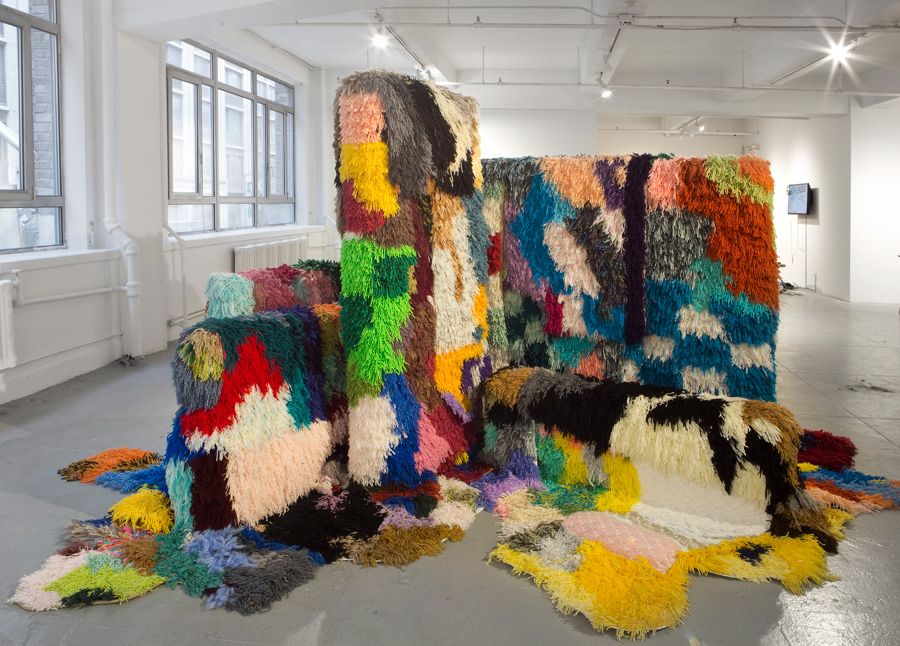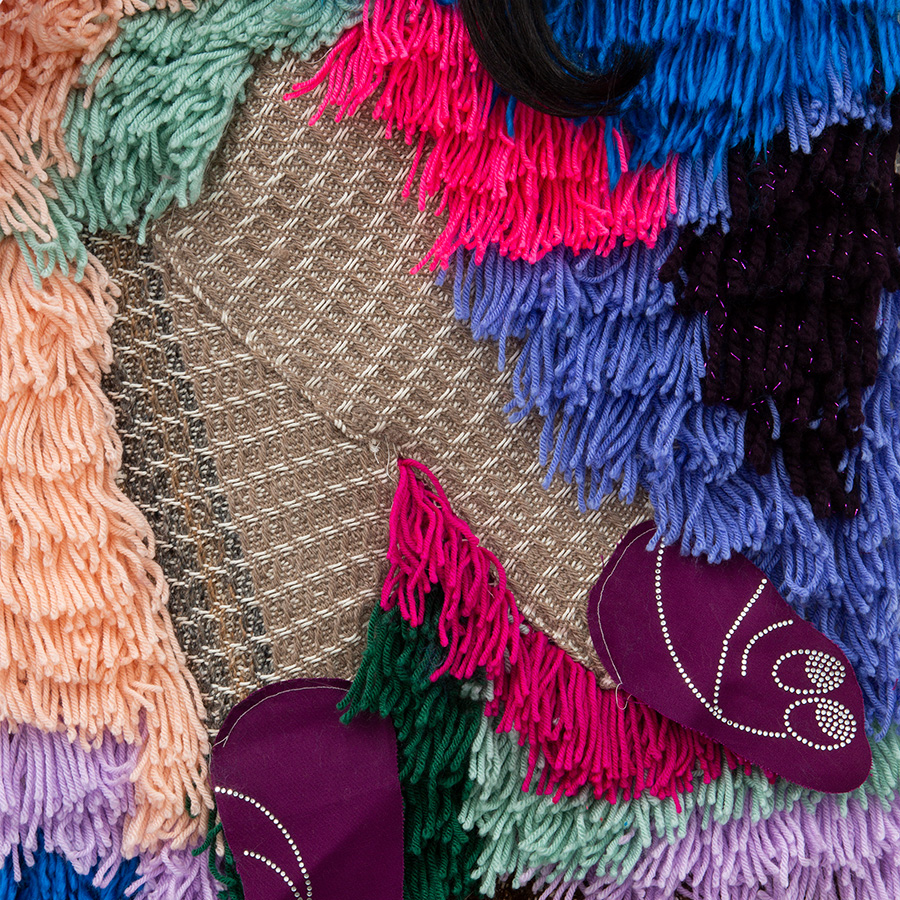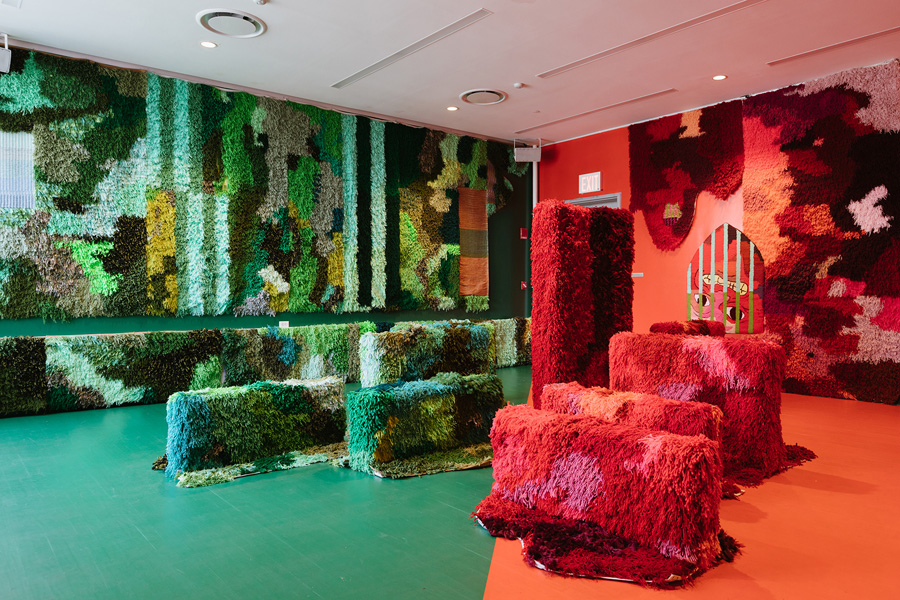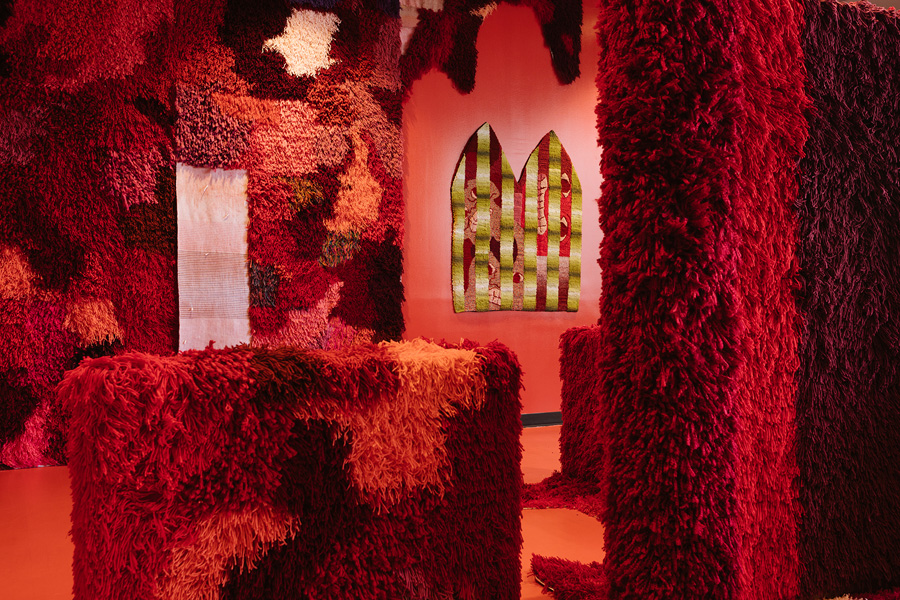
When Sarah Zapata ('11) attended UNT, she found an unusual source of inspiration -- telephone books.
Back then, telephone books were still being widely distributed, and she used the thin pages to weave through her loom.
She now uses the more traditional element of yarn. But her creativity has never faltered, with her colorful textiles exhibited in museums around the world and gaining attention in The New York Times and New York magazine. She relies on her Peruvian and Christian background to fuel her ideas for the challenging format, but her education at the College of Visual Arts and Design has played an important part as well.
"I feel immensely thankful every day," she says. "I'm living the life I never thought I would or deserved."



